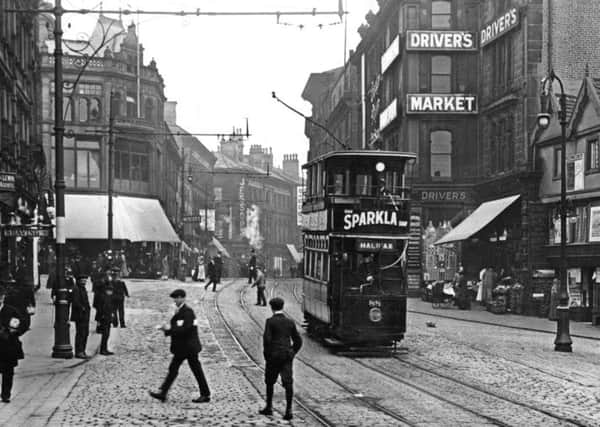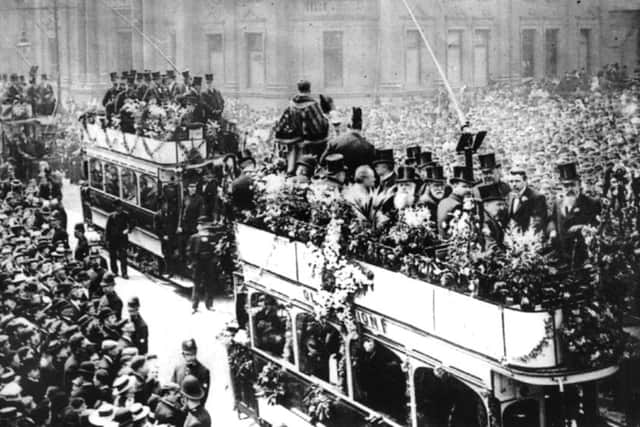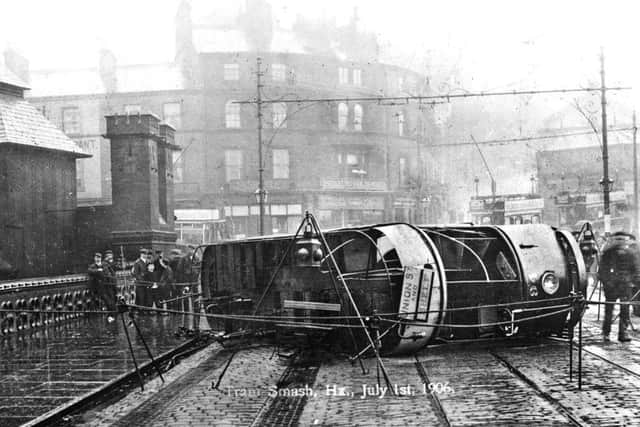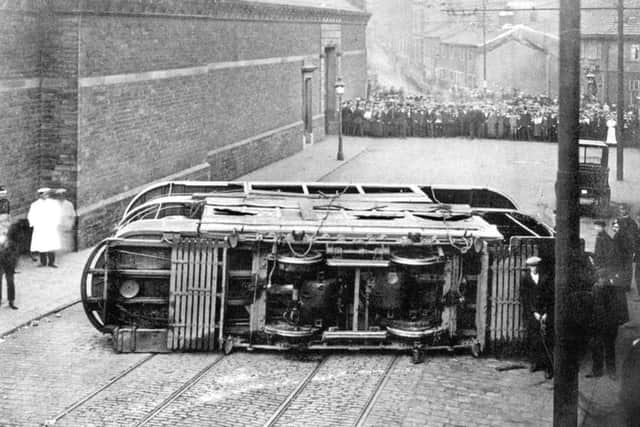Steep Challenge


The tramway undertaking was strongly advocated by Alderman M. Booth when he was elected mayor in November 1894. Eventually becoming known as the ‘Father of Halifax Tramways’, he once said that “in providing such desirable travelling facilities Halifax was behind most, if not all, the great towns, and even some of the smaller towns were ahead of them in such an enterprise”.
Enthusiasm for a system was slow to generate but following a heated meeting of ratepayers early in 1896 there was a strong shift in favour of tramways and it was decided Halifax should control its own system as soon as Parliament would grant permission.
Advertisement
Hide AdAdvertisement
Hide AdThe 1870 Tramway Act did not allow local authorities to operate their own systems, having instead to be run by private companies. Significantly at the AGM of the Association of Municipal Corporations on March 13, 1896, Halifax Alderman J T Spencer moved that “in the opinion of the Association it is desirable that the power to work and use tramways be conferred on all local authorities...’


In Parliament, on August 12, 1896, the resolution was agreed and enabled local authorities to freely run their own tramways.
The work of laying the Halifax lines began on August 30, 1897, the first section extending from near what was then the Lancashire and Yorkshire Railway Station to the Post Office in Commercial Street. The following month, the chairman and vice-chairman ‘screwed the nuts’ of the first two tie bars in the presence of a large, excited crowd.
A Corporation sub-committee decided to operate trams using the overhead electric system and considered it the cheapest and most efficient of the many alternatives examined. They also decided that the danger arising from the overhead wire was entirely removed by carrying the main current underground and making the wire a feeder only. Much had been said about the difficulty presented by the gradient of the Halifax streets, and the committee considered that no bar to the proposed system.
Advertisement
Hide AdAdvertisement
Hide AdAbroad, the committee discovered that out of 91 electric tramways 11 had gradients as steep as 1 in 10, and 18 had gradients steeper than 1 in 14. The steepest part of Horton Street, Halifax, was 1 in 14, and that in Gibbet Street was 1 in 12.


Another reason for favouring electric traction was that the Corporation had already built municipal electric works, which were capable of supplying all the power required.
The total cost was expected to be around £136,000 and initially there were 14 cars provided at a cost of £6,300.
At the formal opening of the Halifax system, the mayor started the first car. Along with members of the Corporation, they journeyed in three cars to King Cross, returned to Hall End, and then travelled to High Road Well by way of Gibbet Street.
Advertisement
Hide AdAdvertisement
Hide AdOriginally the Halifax tram livery was blue and white; a number of cars were grey 1914-18; bright red and yellow 1922-25; and then dark red and white. Services radiated from the town centre to a number of areas including Queensbury, Causeway Foot, Hebden Bridge, Shelf, Brighouse, Stainland, Southowram, Skircoat Green, Trinagle, Pellon, High Road Well and Bailiff Bridge. Services to Stump Cross (Staups Lane) began on June 5, 1900. Routes were later extended beyond.


Because of a number of steep gradients along the Halifax system, it might have been mischievously predicted there would be a number of serious accidents. On Sunday evening, July 1, 1906, there was an accident at New Bank on the Shelf route. the gradient was 1 in 16. Shortly after 7pm, car no. 94, driven by Theodore Chadwick, was descending this thoroughfare, when, as he applied the brakes, he noticed that they failed to ‘bite’, the rails being ‘greasy’. The car gained speed, and despite the efforts of the driver and conductor – William Duffey – both of whom remained at their posts throughout, it quickly got beyond control. When the runaway car reached North Bridge, it jumped the points, but it continued running along the bridge for 20 or 30 yards before it crashed, turning over on its right side. Two passengers were killed. A report on the incident apportioned part of the blame on Chadwick’s misuse of the car’s braking system during inclement weather conditions.
Halifax Corporation Tramways car no. 89 overturned at Lee Bridge, Halifax, on May 22, 1915. The two-decker car was running between Ovenden, Halifax and Savile Park. During the accident windows were smashed and passengers were pitched violently against each other. The driver, Henry Armitage, escaped almost unhurt, but his conductor, J. Sutcliffe suffered face and head injuries. The car was carrying about 56 passengers and some of them scrambled out of the car, but others who were more seriously injured had to be assisted out. The accident was attributed to poor maintenance of track and tram.
The first Halifax tramway to be abandoned was the Brighouse to Bailiff Bridge section on March 30, 1929; the Brighouse route May 6, 1931. Closure of the Halifax system started from 1931 and was completed on February 14, 1939. Seven trams crowded with passengers made the last ceremonial trip from Masons Green, through the city centre to the depot; six trams carried the public, the last tram at 10.20pm carried town officials. Over their running period Halifax’s electric trams had carried 820 million passengers and run 75 million miles.
n For an in-depth look at Halifax trams readers are advised to consult Halifax Corporation Tramways by Eric Thornton and Stanley King